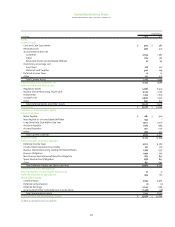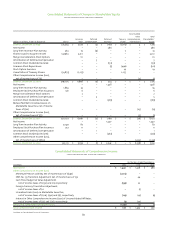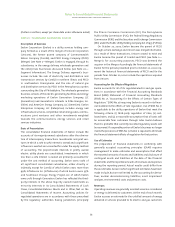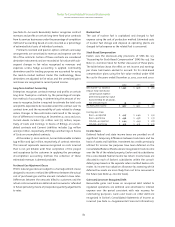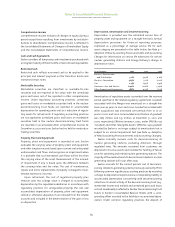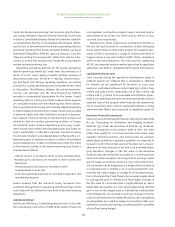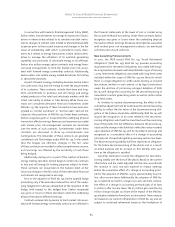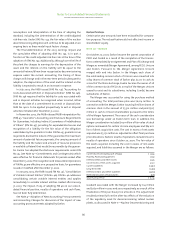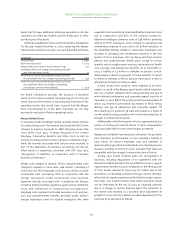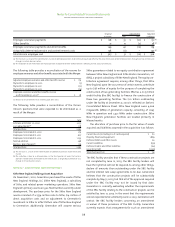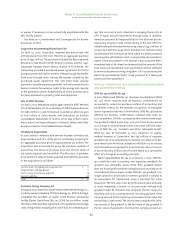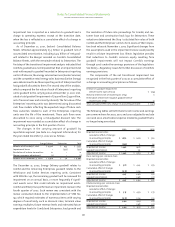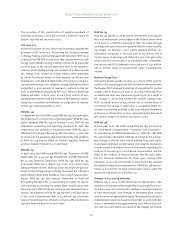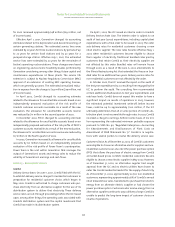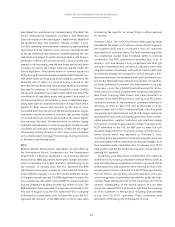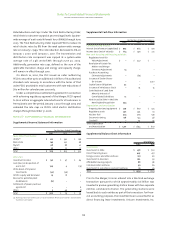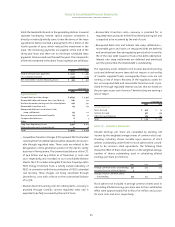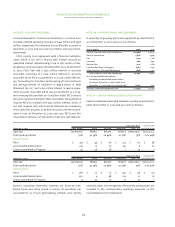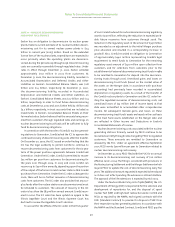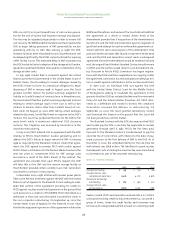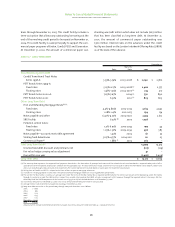ComEd 2002 Annual Report Download - page 91
Download and view the complete annual report
Please find page 91 of the 2002 ComEd annual report below. You can navigate through the pages in the report by either clicking on the pages listed below, or by using the keyword search tool below to find specific information within the annual report.
or waiver, if necessary, can be successfully negotiated with the
SBG Facility lenders.
See Note 19—Commitments and Contingencies for further
discussion of Sithe.
Acquisition of Generating Plants from TXU
On April 25, 2002, Generation acquired two natural-gas and
oil-fired plants from TXU Corp.(TXU) for an aggregate purchase
price of $443 million. The purchase included the 893-megawatt
Mountain Creek Steam Electric Station in Dallas and the 1,441-
megawatt Handley Steam Electric Station in Fort Worth. The
transaction included a purchased power agreement for TXU to
purchase power during the months of May through September
from 2002 through 2006. During the periods covered by the
purchased power agreement, TXU will make fixed capacity
payments, variable expense payments, and will provide fuel to
Exelon in return for exclusive rights to the energy and capacity
of the generation plants. Substantially all of the purchase price
has been allocated to property,plant and equipment.
Sale of AT&T Wireless
On April 1,2002,Enterprises sold its 49% interest in AT&T Wireless
PCS of Philadelphia,LLC to a subsidiary of AT&T Wireless Services
for $285 million in cash. Enterprises recorded an after-tax gain
of $116 million in Other Income and Deductions on Exelon’s
Consolidated Statements of Income on its $84 million invest-
ment, which had been reflected in Deferred Debits and Other
Assets on Exelon’s Consolidated Balance Sheets.
InfraSource Acquisitions
In 2001, Exelon’s infrastructure services business (InfraSource),
acquired the assets of a utility service contracting company for
an aggregate purchase price of approximately $31 million. The
acquisition was accounted for using the purchase method of
accounting. The excess of purchase price over the fair value of
net assets acquired was $19 million. The allocation of purchase
price to the fair value of assets acquired and liabilities assumed
in the acquisition is as follows:
Current Assets (including cash acquired of $1) $ 11
Property, Plant and Equipment 11
Cost in excess of net assets acquired 19
Current Liabilities (10)
Total $ 31
AmerGen Energy Company, LLC
In August2000,AmerGen,a joint venture with British Energy,Inc.,
a wholly owned subsidiary of British Energy plc, (British Energy),
completed the purchase of Oyster Creek Nuclear Generating
Facility (Oyster Creek) from GPU, Inc. (GPU) for $10 million. Under
the terms of the purchase agreement,GPU agreed to fund outage
costs of $89 million, including the cost of fuel,for a refueling out-
age that occurred in 2000. AmerGen is repaying these costs to
GPU in equal annual installments through 2009. In addition,
AmerGen assumed full responsibility for the ultimate decom-
missioning of Oyster Creek. At the closing of the sale, GPU pro-
vided funding for the decommissioning trust of $440 million.In
conjunction with this acquisition, AmerGen has received a fully
funded decommissioning trust fund which has been computed
assuming the anticipated costs to appropriately decommission
Oyster Creek discounted to net present value using the NRC’s
mandated rate of 2%.AmerGen believes that the amount of the
trust fund and investment earnings thereon will be sufficient
to meet its decommissioning obligation. GPU is purchasing the
electricity generated by Oyster Creek pursuant to a three-year
power purchase agreement.
note 04 • adoption of new accounting pronouncements
and accounting changes
SFAS No. 141 and SFAS No. 142
In 2001,FASB issued SFAS No. 141,“Business Combinations”(SFAS
No. 141), which requires that all business combinations be
accounted for under the purchase method of accounting and
establishes criteria for the separate recognition of intangible
assets acquired in business combinations. SFAS No. 141 became
effective for business combinations initiated after June 30,
2001. In addition, SFAS No. 141 required that unamortized nega-
tive goodwill related to pre-July 1, 2001 purchases be recognized
as a change in accounting principle concurrent with the adop-
tion of SFAS No. 142, “Goodwill and Other Intangible Assets”
(SFAS No. 142). At December 31, 2001, AmerGen, an equity-
method investee of Generation, had $43 million of negative
goodwill, net of accumulated amortization, recorded on its bal-
ance sheet.Upon AmerGen’s adoption of SFAS No.141 in January
2002, Generation recognized its proportionate share of income
of $22 million ($13 million, net of income taxes) as a cumulative
effect of a change in accounting principle.
Exelon adopted SFAS No. 142 as of January 1, 2002. SFAS No.
142 establishes new accounting and reporting standards for
goodwill and intangible assets. Other than goodwill, Exelon
does nothave significant other intangible assets recorded on its
consolidated balance sheets. Under SFAS No. 142, goodwill is no
longer subject to amortization; however, goodwill is subject to
an assessment for impairment using a two-step fair value
based test. The first step must be performed at least annually,
or more frequently if events or circumstances indicate that
goodwill might be impaired and compares the fair value of a
reporting unit to its carrying amount, including goodwill. If the
carrying amount of the reporting unit exceeds its fair value,the
second step is performed. The second step compares the carry-
ing amount of the goodwill to the fair value of the goodwill. If
the fair value of goodwill is less than the carrying amount, an
Notes To Consolidated Financial Statements
exelon corporation and subsidiary companies
89


